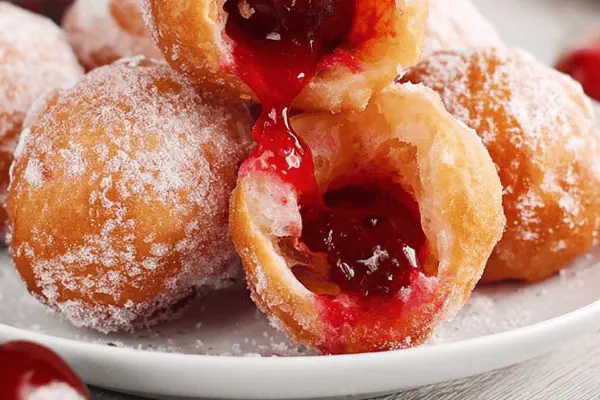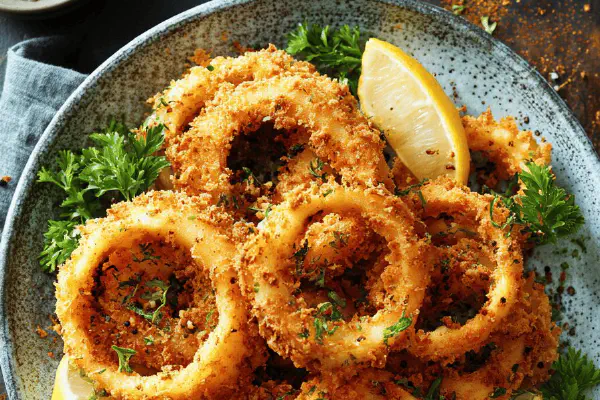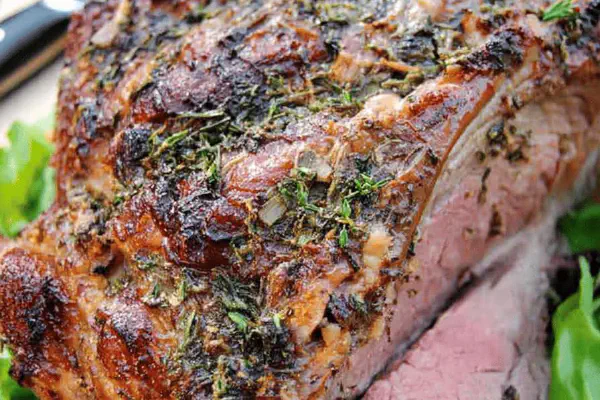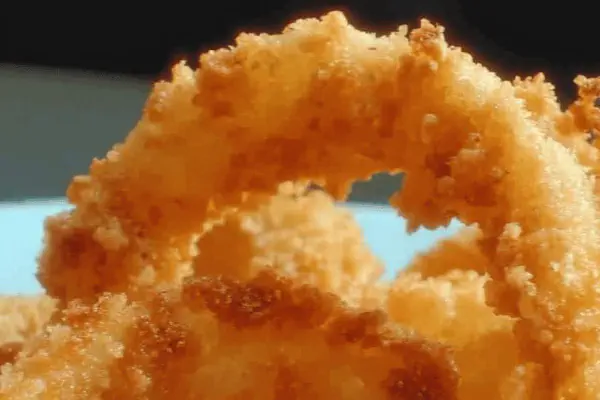Spiced Lamb Kebbés
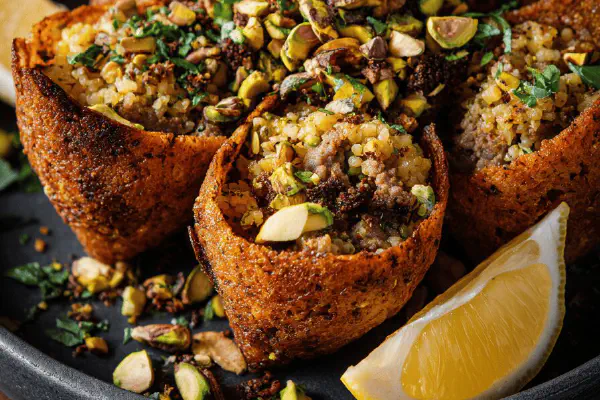
By Emma
Certified Culinary Professional
Ingredients
Spices
- 6 ml (1 1/4 tsp) allspice ground
- 3 ml (3/4 tsp) ground coriander
- 3 ml (3/4 tsp) ground cinnamon
- 2 ml (1/2 tsp) ground nutmeg
- 2 ml (1/2 tsp) freshly ground black pepper
- 1 pinch ground cardamom instead of clove
- 1 pinch cayenne pepper for heat twist
Kebbés Mixture
- 100 g (1/2 cup) fine bulgur
- 400 g (14 oz) ground lamb, lean
- 15 ml (1 tbsp) ghee or clarified butter instead of regular butter
- 1 medium onion divided (1/2 finely diced, 1/2 finely chopped)
- 2 garlic cloves, minced (extra for punch)
- 10 ml (2 tsp) salt divided
- 30 g (1/3 cup) chopped pistachios instead of walnuts
- Vegetable oil for deep frying
- Lemon wedges for serving
About the ingredients
Method
Spice Mix Preparation
- Mix all spices, including cardamom and cayenne, in a small bowl. Set aside. Aromas will become sharper as you cook the meat.
Bulgur Handling
- Soak bulgur in cold water 20 minutes. Drain in a sieve. Wrap in a clean towel, squeeze hard, release as much water as possible. Moist but not mushy—moisture crucial for binding.
Filling Base
- Heat ghee in skillet medium-high. Add 150 g lamb and cook till starts browning, 6 minutes. Crumble to break lumps. Toss in half the diced onion, garlic, 5 ml spice mix, 1 tsp salt. Cook 4 minutes until softened, fragrant, and fragrant oils bloom. Stir in pistachios. Cool on plate. Don’t rush; cooling filling ensures no breakage later.
Outer Shell
- Pulse remaining onion and raw lamb with leftover spices and salt in food processor until sticky and even. Add bulgur last, pulse to combine but keep mixture slightly coarse. Too fine and the shell will be dense, lose give.
Shaping
- Oil hands lightly. Scoop 30 ml (2 tbsp) outer mix, roll into ball. Press thumb to make a hollow cone shape, 2 mm thick. Fill cavity with 15 ml reserved filling. Seal using another thin layer of outer mix. Shape with ovals, tips pointed football-like. Keep covered with damp towel to avoid drying out.
Frying
- Heat oil to 175°C (350°F). Temperature vital: too hot—exterior burns, inside raw; too low—soggy, oily kebbés. Fry in small batches 2 to 2.5 minutes, turning once or twice gently. Golden brown and firm means done. Drain on paper towels.
- Serve warm with lemon wedges. Bright acidity cuts richness, balances spices.
Tips and Troubleshooting
- If shell too fragile, bulgur not squeezed enough or too wet. Too dense? Overworked in processor or too little spice/oil. Lamb fat ratio ideal about 15-20% for moistness; too lean dries filling.
- Pistachios add subtle nuttiness and crunch contrast, prefer this to walnuts for freshness. Ghee adds deep aroma, tolerate heat better than butter, no burn.
- If no fryer, shallow fry in heavy pan with enough oil, careful flipping often—maintain temp by adjusting burner.
- Can prepare kebbés in advance, chill before frying; helps firm shape.
Cooking tips
Chef's notes
- 💡 Bulgur soak crucial—20 mins cold water then squeeze hard in towel. Moisture level sets shell texture. Too wet means collapsing. Too dry? Shell cracks. Keep checking feel. Don’t rush squeezing. It’s fine grain, so much water clings. Wrap tight, press and twist. Repeat if needed. Avoid mushy mix; consistency after pressing is key. Timing matters here. Drying bulgur ruins shape; wet soggy shell. The balance—just right, firm but pliable.
- 💡 Ghee over butter if cooking temps get high. Butter burns quick, dulls flavor. Ghee holds aroma longer, tolerates heat better. Adds depth; nutty scent builds fast at medium-high. Important for browning meat; before spices bloom, smell changes, still fresh. If ghee missing, clarified butter okay, or stable oil like sunflower. Avoid plain butter for filling base frying. The fats change moisture feel too—fat ratio in lamb also affects filling grip, aiming 15-20 percent fat helps juicy mouthfeel without grease.
- 💡 Handling raw plus cooked lamb mix helps moisture balance. Pulse raw lamb with onions, spices and bulgur last. Pulse lightly—don’t go paste. Keep shell coarse enough for texture, too fine means dense, rubbery casing. Thickened shell breaks on frying. Use oiled hands for shaping. Prevents sticking, allows thin layer without tears or holes. Pinch edges gently. Cone shape thin as 2 mm max. Hollow center holds filling, small volume, enough to avoid bursting. Keep shaping covered with damp towel—drying shell cracks quickly, leaks during frying.
- 💡 Oil temp king. Around 175 degrees C or 350 F works. Use thermometer if you can. Too hot burns shells—dark crust, raw inside. Too cool, oily, soggy kebbés. Small batches important; crowding drops temp fast, crust soggy. Fry 2 to 2.5 minutes, turn gently once or twice, hear sizzle mellow into steady crackle. Color golden brown, firm texture signals done. Remove, drain well on paper towels. Rest briefly before serving; hot filling too fragile. Lemon wedges bright, cut richness. Don’t skip acidity—otherwise, mouth feels heavy, filling dull.
- 💡 If shell fragile, likely bulgur wet or squeezed poorly. If dense, over-processed meat mix or low spices/oil. Experiment with spice quantities—cardamom often swapped for clove adds floral lift. Pistachios replace walnuts, fresher flavor, crunch. Toast nuts for deeper flavor before adding. Garlic level varies; extra clove in filling sharpens bite, adds punch. Process spices fresh; old powder dulls flavor. If no deep fryer, shallow fry in heavy pan with enough oil. Turn often to maintain even color, adjust burner for steady temperature. Cooling filling before stuffing prevents leaks. Patience key.
Common questions
How to tell bulgur is ready for shell?
Should feel moist but not soggy. Squeeze in towel till most water gone. If wet, shell breaks. If dry, cracks. Test by pressing ball of mix; should hold but squish slightly. Rest longer if needed.
Can walnuts replace pistachios?
Yes. Walnuts richer, slightly bitter. Toast before mixing for flavor boost. Pistachios add crunch and brightness that balances fat. Use what’s on hand. Adjust salt if changing nuts to balance taste.
Why does shell crack or break?
Usually bulgur too wet or not squeezed enough. Also if meat shell mix overworked in processor, gets dense and brittle. Use oiled hands, thin layer. Keep covered to prevent drying out. Adjust moisture carefully.
Best way to store kebbés after frying?
Keep room temp short term, covered loosely. Refrigerate if storing longer, reheat in pan to crisp again. Avoid microwave or baking; dries out shell. Can freeze raw shaped kebbés, wrap tightly. Fry from frozen, adjust frying time slightly.
